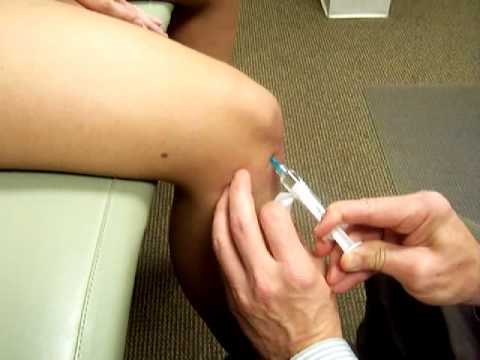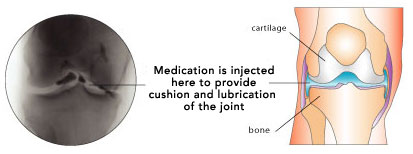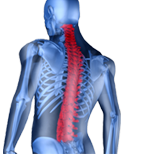Knee Injection

What is a Knee Joint Injection Procedure?
This is an injection into the knee joint, which is the likely cause of your pain.
Why is a Knee Joint Injection Procedure helpful?
It is helpful in the diagnosis and treatment of your pain, which is likely due to a disorder of your knee joint. Two medications are used for the injection: a shorter-acting local anesthetic numbing agent and a longer-acting anti-inflammatory steroid agent. You will likely experience temporary pain relief after the injection due to the shorter-acting local anesthetic numbing agent. Then, you will likely experience longer pain relief after the injection due to the longer-acting anti-inflammatory steroid agent.
Contraindications
• Cellulitis or broken skin over the intended entry site for injection or aspiration
• Anticoagulant therapy that is not well controlled
• Severe primary coagulopathy
• Infected effusion of a bursa or a periarticular structure
• More than three previous injections in the preceding 12-month period (relative)
• Lack of response to two or three previous injections (relative)
• Suspected bacteremia
• Unstable joints (for steroid injection)
• Joint prostheses
• Pregnancy (relative)

Procedure Detail
The best approach to a knee injection is the path of least obstruction and maximal access to the synovial cavity, which could be superolateral, superomedial, or anteromedial/anterolateral. The superolateral approach into the suprapatellar pouch might provide a better and more reliable route of entry into the knee joint than the superomedial or anteromedial/anterolateral approaches. The procedure may be performed blindly or with the assistance of X-Ray or Ultrasound. The knee is prepped sterile after the entry site is marked.
Superolateral approach
For the superolateral approach, the patient lies supine or sits with the knee almost extended or flexed. The clinician’s thumb is used to gently rock then stabilize the patella while the needle is inserted underneath the supralateral surface of the patella, aimed toward the center of the patella, and then directed slightly posteriorly and inferomedially into the knee joint.
Anterolateral and anteromedial approaches
For the anterolateral and anteromedial approaches, the patient can sit or lie supine with the knee flexed 90° to afford better exposure of the intra-articular surface and thus facilitate ease of needle entry into the joint space.
The sterile needle is inserted either lateral to the patellar tendon (for the anterolateral approach) or medial to the tendon (for the anteromedial approach), approximately 1 cm above the tibial plateau, and directed 15-45° from the anterior knee surface vertical midline toward the intra-articular joint space.
After the needle is inserted in a sterile technique into the knee joint, the medications – local anesthetic (Lidocaine or Bupivacaine) and steroid (Depomedrol) are injected into the joint. The needle is then removed from the joint. The injection procedure itself is brief, usually lasting less than 5 minutes.
Post Procedure
You may become a little sore at the soft tissues of the procedure site, which is normal and to be expected. You may apply an ice-pack to the sore area of the procedure site. The soreness at the procedure site should go away in a couple of days. It usually takes 48 to 72 hours to experience relief of your knee pain from the longer-acting anti-inflammatory steroid agent. A follow-up appointment will be made for you.
Can I go to work the next day after a Knee Joint Injection Procedure?
You can return to work the same day.



